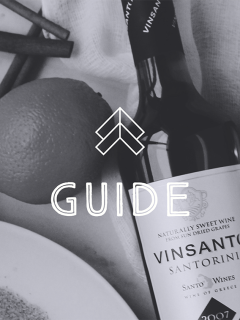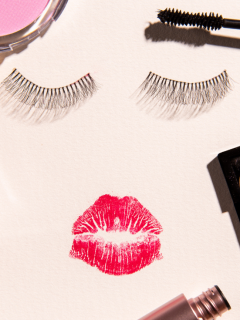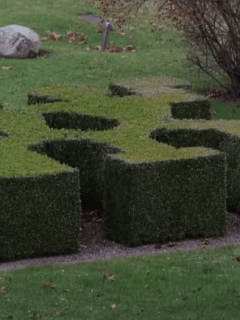Wrap it up: how to pack your demanding products
Online shopping has never been bigger and it has become a given that we can acquire more or less anything with just a few clicks of the mouse or taps on the screen. According to FDIH’s report for the first half of 2018, Danes shopped for 63 billion DKK online in the same period – an increase of almost 12%. [i]
This growing trend has meant that the packaging industry needs to think more innovatively so that customers can be sure that the goods they buy online arrive safely and in good condition.
Here at Rajapack we are experts in protective packaging, so if you’re wondering how best to pack your valuable products or goods with a cumbersome shape then please read on! In fact, we’ve written a thorough guide on how to pack just those “troublesome” products that both businesses and individuals want to protect during transport.
How to pack lamps
Lamps can be extremely delicate and fragile. So where do you start? Here are our tips:
You will need:
- A cardboard box
- Bubble wrap and tape
- Foam
- Loose filling
- Cable ties
- Labels with the text “Fragile/This way up”
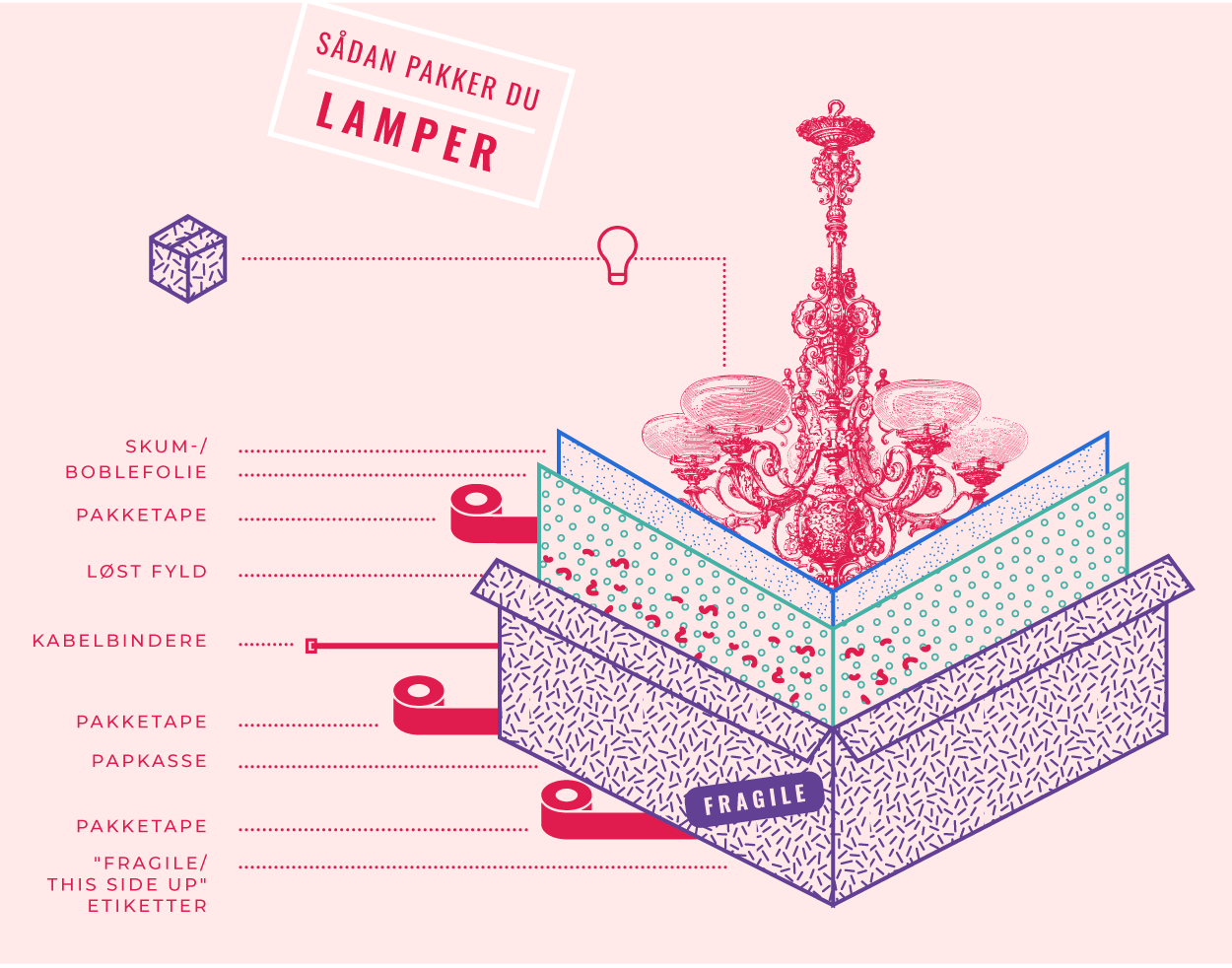
Tip: It’s easiest to pack a lamp if it’s already hanging, so place the lamp on a hook or similar if possible. If not, make sure the lamp is placed on plenty of protection (towels, pillows, blankets). If the lamp is placed directly on a hard surface, it can easily be damaged.
- First you need to find a suitable cardboard box. Ideally, there should be a 7-10 cm gap between the lamp and the box all the way around. Allow for the weight of the lamp. If the lamp is heavy, use a double corrugated box. It will provide extra protection and offer better resistance to bumps and knocks than single corrugated boxes.
- Remove any bulbs and other loose parts and wrap them in protective foil and place them in a separate box.
- The next step is to look for sharp edges, which can be damaged during transport. Wrap them in thick foam or use cardboard and tape to protect them. Pay attention to the top and bottom of the lamp. The bottom is most exposed to pressure, and together with the top, these are the two most vulnerable places. Wrap both well in bubble or foam wrap.
- Make sure the bottom of the cardboard box is securely closed with tape. Then create a soft base of foam or bubble wrap. Join loose wires with cable ties. The lamp can now be carefully placed in the box. Remember to keep the lamp as upright as possible. Fill in any remaining voids with loose fill, making sure it is compact enough that the lamp cannot move.
- When you think the lamp is safely packed in the box, cover the top with a layer of foam or bubble wrap. Close the box with tape. On the outside of the box, put labels saying “Fragile” and “This side up”. This lets the carrier know that the contents are fragile and prevents the box from being turned sideways or upside down during transport.
How to pack art
Art can be very precious and it is important to protect paintings and other art objects well. A flat product is best packaged by wrapping it in tissue paper and then wrapping any corners and sharp edges in cardboard. Cardboard is then placed all around the product and taped together with packing tape. Then place the product in a white cardboard box and seal with tape. The white exterior helps give the shipment an exclusive finish. On the outside of the box, a tracking pocket with the address and related documents is used.
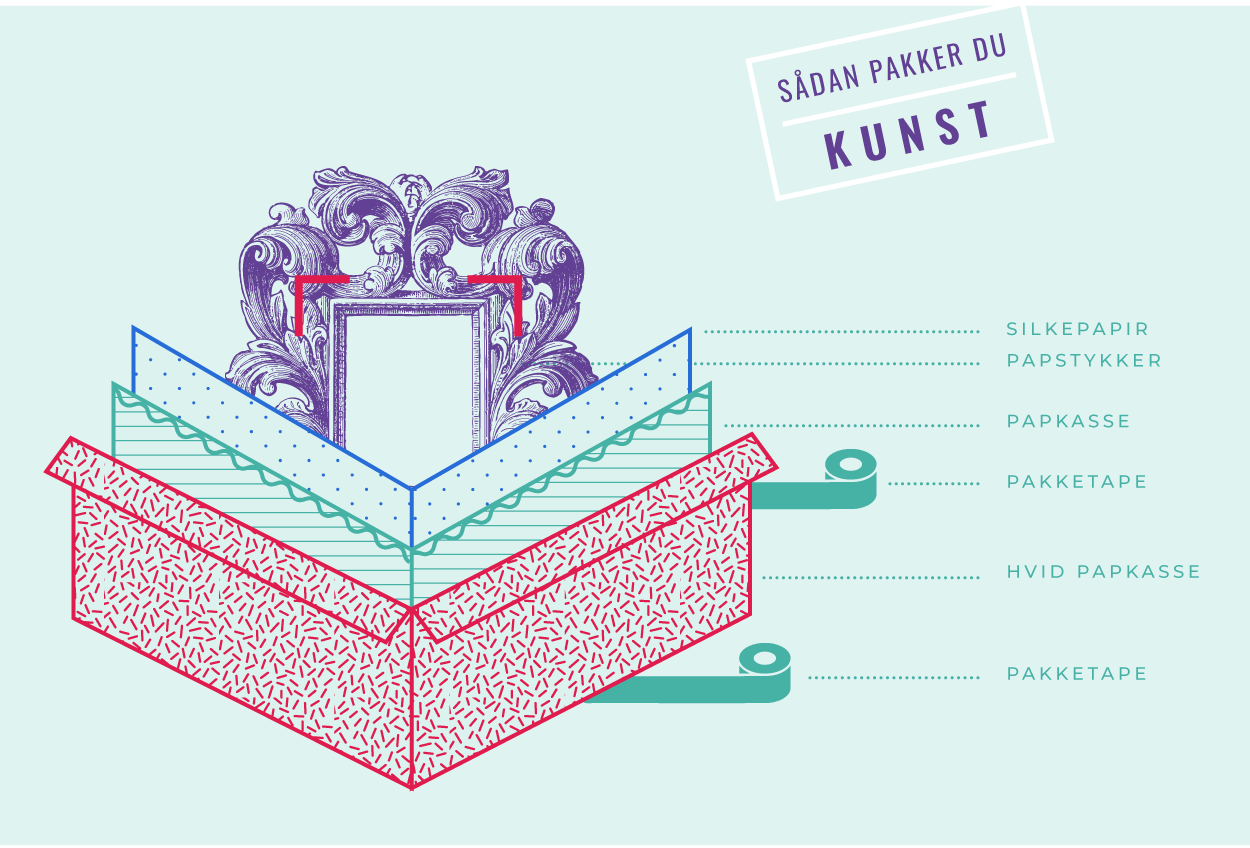
How to pack porcelain
Small items like china can be a hassle to pack, to say the least, and no one wants to receive unpacked goods, so here are our suggestions for the best packaging.
You will need:
- Tissue paper
- Bubble wrap
- Tape
- Loose fillings
- Foam profiles
- A cardboard box
- A second double corrugated cardboard box 7-10 cm larger than the first
- Warning labels printed “Fragile”
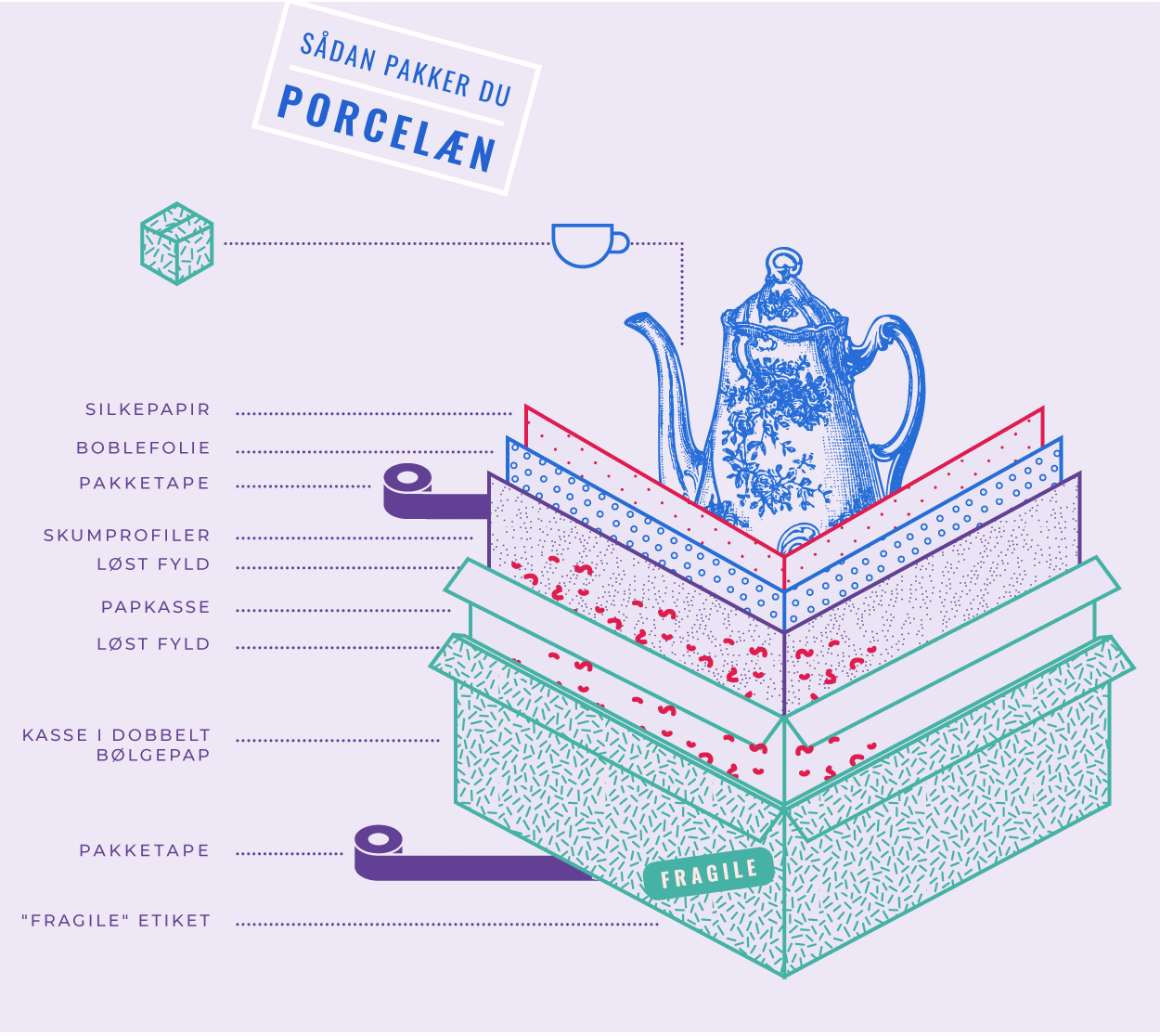
Tip: First of all, make sure you have plenty of space. Make room at a packing station or packing table. If you don’t have either, put a blanket on the floor to create a large, protective surface. That way you’ll avoid accidental scratches and can minimize major damage if you accidentally drop the china.
- You will need a cardboard box at least 2.5 cm larger than the porcelain you are packing. You will also need a second double corrugated box, 7-10 cm larger than the first box.
- Lay out the porcelain you are packing and sort by size and type. If the porcelain is not the same size or shape or is extremely fragile, place them in small, separate boxes. This way they are better protected and can then be placed in the second (and larger) cardboard box.
- Wrap each product in tissue paper and finish with tape. Then repeat with bubble wrap so that the product is completely covered and finish with tape. If you’re dealing with very fragile products, it’s always better to be on the safe side. Most damage to this type of product is caused by it lying on its side and bumping into each other during transport.
- Take the first (and smallest) cardboard box and cut two pieces of foam board to fit the bottom and top of the box. Place one piece on the bottom and then place the first layer of china on top. Now fill a layer of about 5 cm with loose parcel filling. Repeat the procedure until the box is 2.5-5 cm from being filled. Then place the last foam sheet on top and make sure there is a light pressure before closing the box so that the products are fixed. However, the pressure must not be so great that the contents can be damaged.
- Fill about 7 cm of loose filling in the bottom of the second (and larger box) and place the smaller box (with the porcelain) on top of the filling. Fill the gap between the two boxes with loose filling and close the double corrugated cardboard box with tape. Finally, we recommend that you affix a “Fragile” warning label so that the carrier is extra aware of the handling of the box.
How to pack wine
Sending wines? And are you wondering how to avoid damage and broken bottles? To best protect bottles, we recommend compartmentalised bottle packaging. That way, each bottle is individually protected so they don’t bump into each other. Most bottle packaging allows you to send up to 12 bottles in one box without having to consider whether the bottles are the same shape. If you are sending very expensive bottles or just want to be extra careful, there are also inserts with integrated foil that secure the bottles before they are placed in the crate.
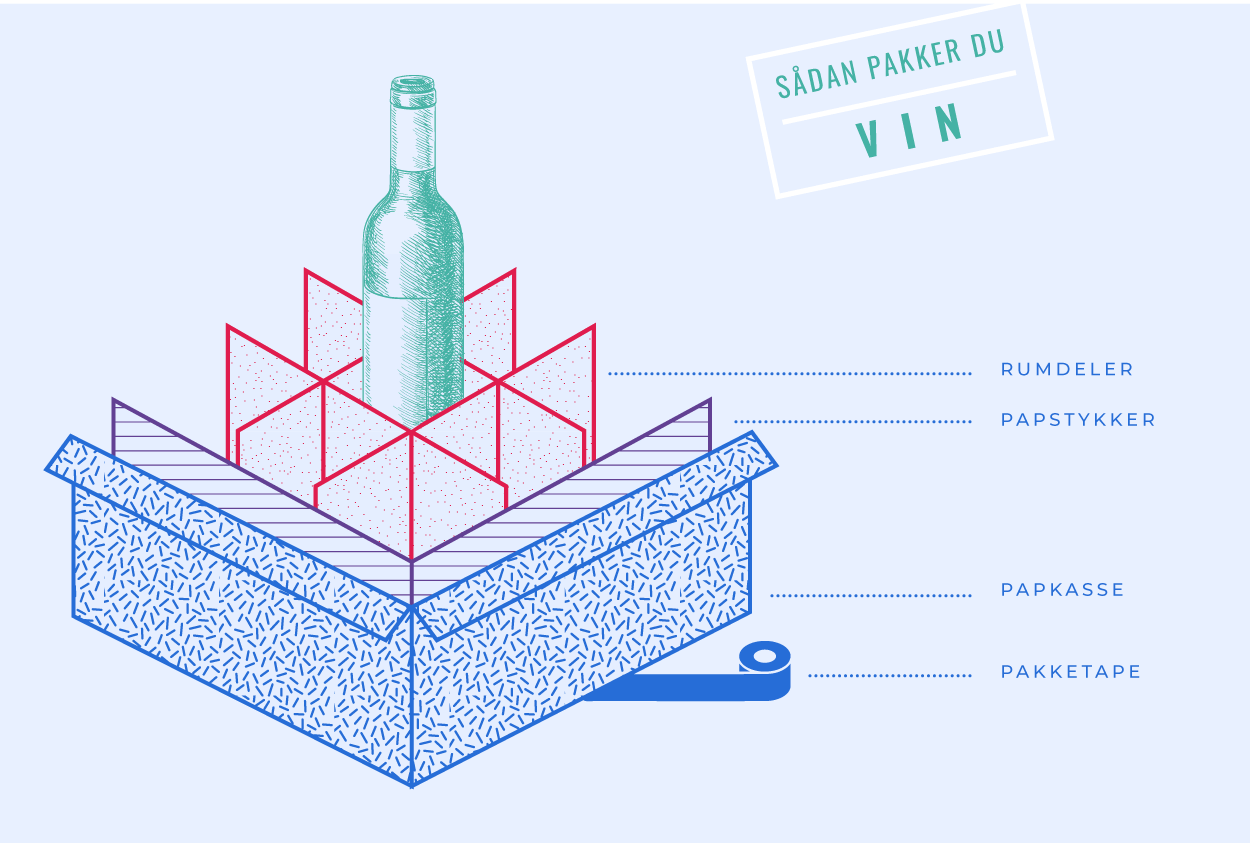
How to pack bicycles
There are no limits to what Danes buy online and bicycles are no exception. If you’re on the receiving end, there are some important precautions to take to ensure your bike isn’t damaged in transit. Here are our recommendations:
You will need:
- Bubble wrap
- Thick foam profiles
- Loose filling
- A large, flat box with space for the entire bike frame
- A transparent plastic bag to hold small parts.
- Cable ties
- Tools (to disassemble the bike)
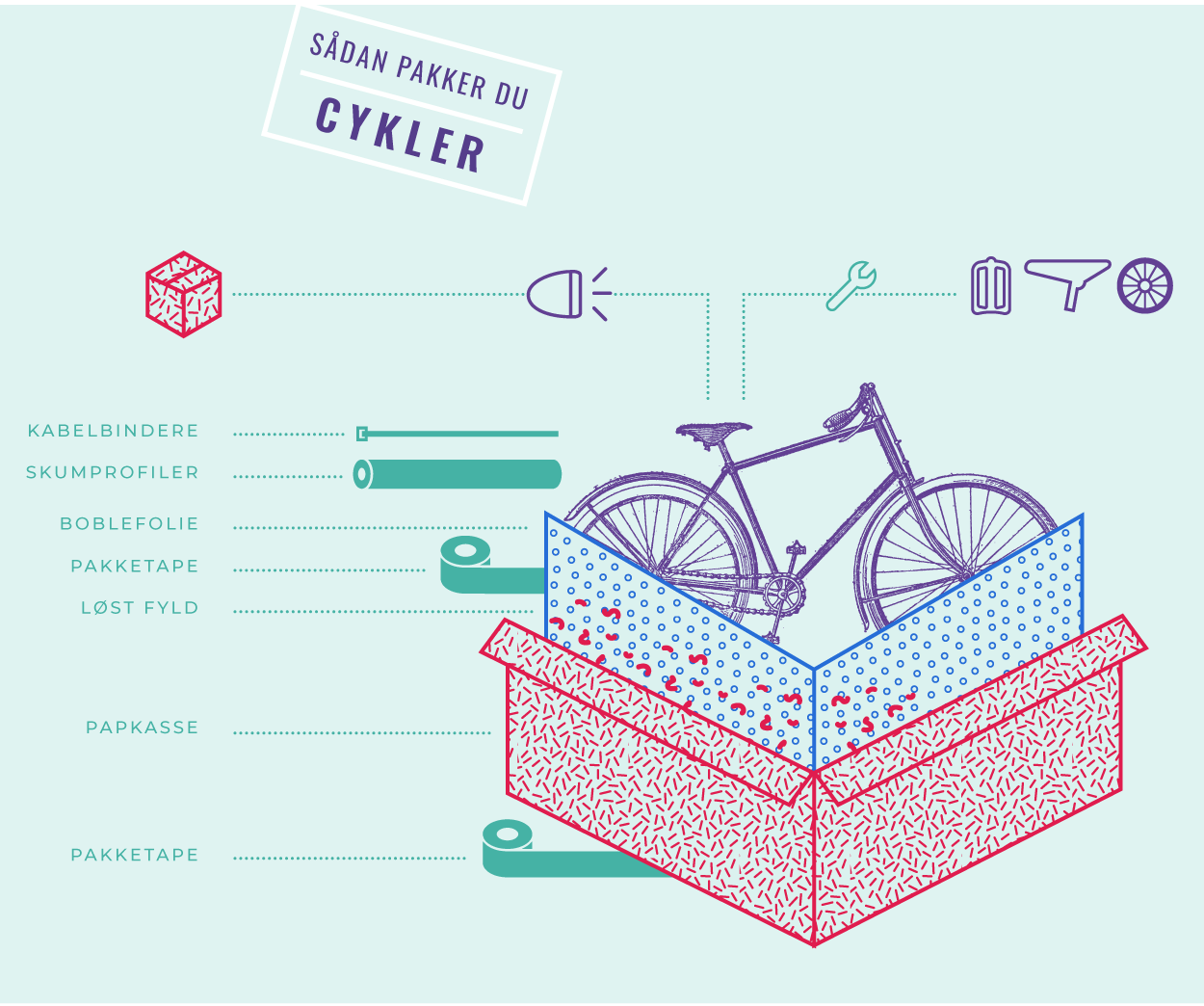
- Make sure you have plenty of workspace. Remove any extra parts such as lights, bottle cages etc. Pack these separately and put them in the box once the frame has been put in.
- Remove the saddle. If it is attached with screws and/or bolts, put them in a separate plastic bag, preferably with a zipper or similar, so that they do not disappear. Then remove the pedals.
Tip: If possible, turn the gears and brakes 90 degrees so they face the same direction as the frame. If this is not possible, remove them completely. Remove all screws and bolts holding the brakes and gears in place but do not remove any cables.
- The next step is to remove the front wheel. Sometimes this is quite easy, but if not then all screws and bolts must be removed and put in the bag with the others. Take some of the air out of the tyres before packing.
- To protect your bike during transport, use cable ties to secure the gears and brakes to the frame. Protect the frame from scratches using foam profiles which are also held in place by cable ties. Where it is not possible to use foam, you can use bubble wrap instead. The bubble wrap is fixed with tape.
- Fill the bottom of the flat cardboard box with about 5 cm of loose filling and place the bicycle frame on top. Then place the front wheel in the box next to the frame. Finally, put down the bag of screws and bolts and other loose parts.
- Now the rest of the box can be filled with loose filling to fix the contents. Once this is done, the box is taped together.
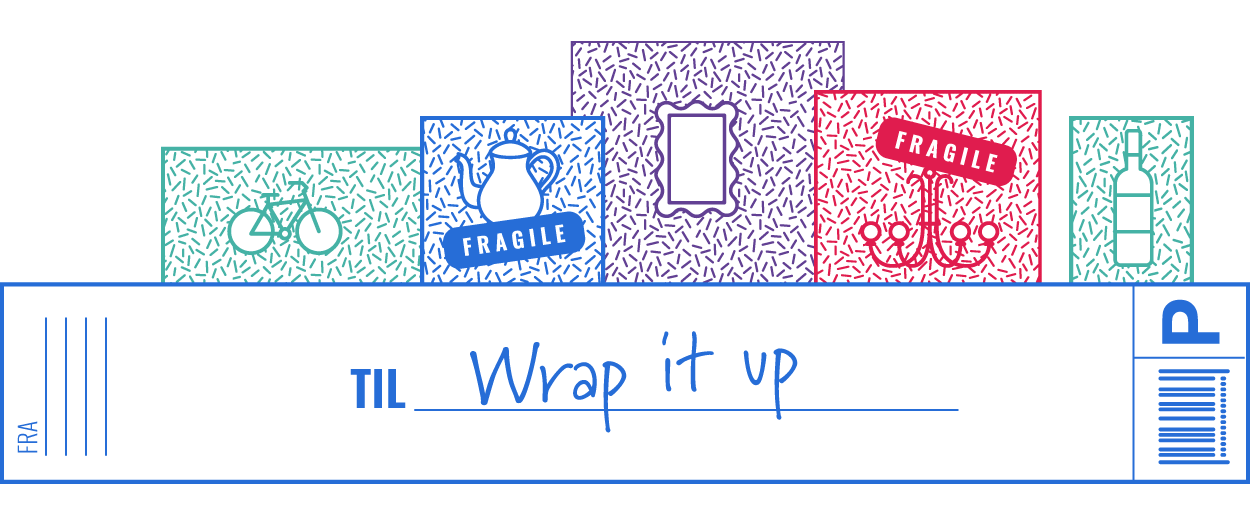
If you have any questions about our products or how best to pack your goods, our specialists are always on hand to advise and help you find the exact type of packaging you need. Contact us on 44 58 77 00 or info@rajapack.dk.
[i] https://www.fdih.dk/analyser/fdih-e-handelsanalyser/ars-og-halvars-rapporter/halvarsanalyse-2018











